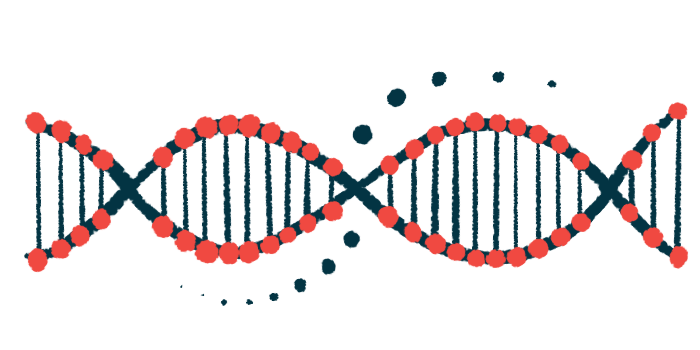Treatments for ALS could also be useful in Huntington’s, study finds
Researchers link TDB-43 protein abnormalities with both diseases

Abnormalities in a protein called TDP-43, which is known to play a key role in the development of amyotrophic lateral sclerosis (ALS), may also underly Huntington’s disease, a study found, meaning strategies being explored as treatments for ALS might also be useful for treating Huntington’s.
“Drugs developed to interact with these pathways could offer new hope for slowing or even reversing neurodegeneration in [Huntington’s], ALS and other diseases where TDP-43 dysregulation is significant,” Leslie Thompson, PhD, a professor at the University of California Irvine and co-author of the study, said in a university news story.
The study, “Aberrant splicing in Huntington’s disease accompanies disrupted TDP-43 activity and altered m6A RNA modification,” was published in Nature Neuroscience.
When the genes in a cell’s DNA are read, the genetic code is copied over into a molecule called RNA. Cells use messenger RNA (mRNA) as a template to make proteins. There also are RNA molecules that carry out specific regulatory activities within cells. Modulating the activity of RNA is one of the most important ways that cells regulate their genes.
Huntington’s is caused by mutations in the gene HTT, resulting in damage to the brain, especially a part called the striatum. It’s well established that Huntington’s-causing HTT mutations lead to abnormalities in RNA processing, causing disruption of many genes that are important for maintaining the health of nerve cells in the striatum. However, it hasn’t been clear how HTT mutations lead to problems with RNA processing.
Potential broad applications
“By targeting key processes like RNA splicing [editing] and modification, we not only advance our understanding of the molecular disruptions behind HD [Huntington’s disease] but also open the door to potential new treatments for neurodegenerative diseases more broadly,” said Robert Spitale, PhD, study co-author and a professor at UC Irvine.
The study found that at least some of the RNA processing issues that occur in Huntington’s are caused by defects in the activity of TDP-43, a protein that normally binds to certain types of RNA to help with processing. Through a series of experiments using mouse models and human brain samples, the researchers demonstrated that TDP-43 dysfunction is characteristic of Huntington’s and is associated with abnormalities of m6A, a type of molecular modification that normally helps TDP-43 to attach to RNA molecules. This molecular modification involves adding a small molecule called a methyl group to a specific building block of mRNA.
“Our findings offer new insights into the role of TDP-43 and m6A modifications in contributing to defective RNA processing” in Huntington’s, Thompson said. “This enhanced understanding highlights their potential as therapeutic targets, which are major areas of research for other neurological disorders,” she said.
The researchers found that dysfunction of TDP-43 and m6A directly contribute to the dysregulation of striatal genes thought to contribute to nerve death in Huntington’s.
“We show that TDP-43 loss of function and aberrant m6A modifications contribute to [RNA processing problems] in [Huntington’s disease], leading to the altered expression of critical striatal genes known to be dysregulated in [Huntington’s disease],” the scientists wrote, adding that these data “support TDP-43 loss of function coupled with altered m6A modification as a mechanism underlying … critical gene dysregulation implicated in” Huntington’s.
TDP-43 dysfunction is a molecular hallmark of ALS, another neurological disease. ALS is marked by problems with the nerve cells that control movement, resulting in progressive muscle weakness and paralysis.
Since TDP-43 is known to play an important role in ALS, much ALS research has focused on finding treatments that can normalize the activity of this protein. The new data suggest that these treatment strategies may also have utility in Huntington’s.
“The body of work suggests that the impact of TDP-43 dysregulation involved in disease [development] is broad and may represent a pivotal therapeutic target for neurodegenerative diseases in general,” the scientists wrote. “The relationship discovered in the present study between TDP-43 and m6A also suggests that emergent methods to control m6A could have a therapeutic benefit through the regulation of TDP-43.”







